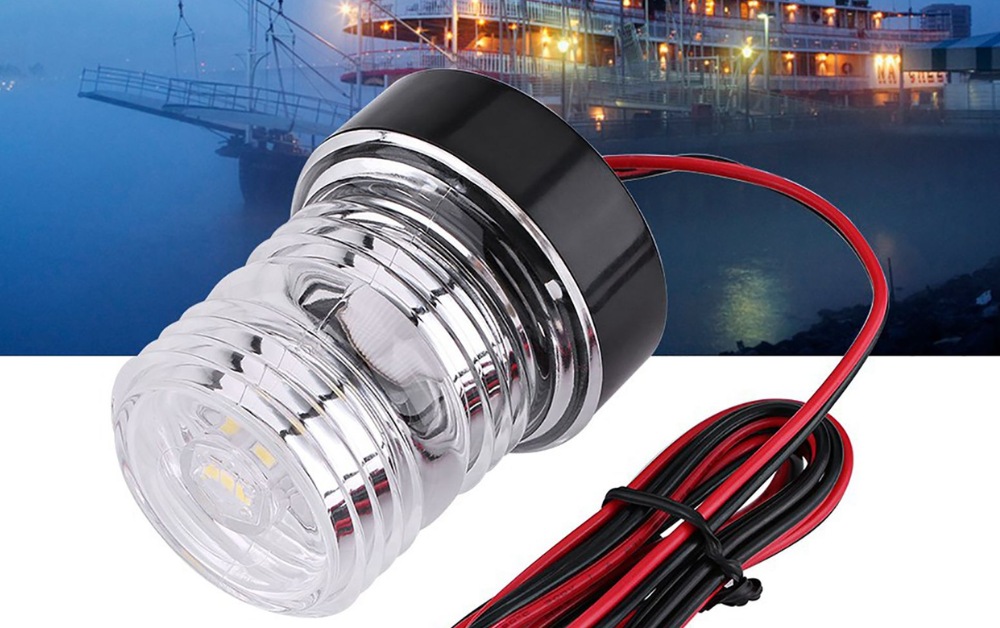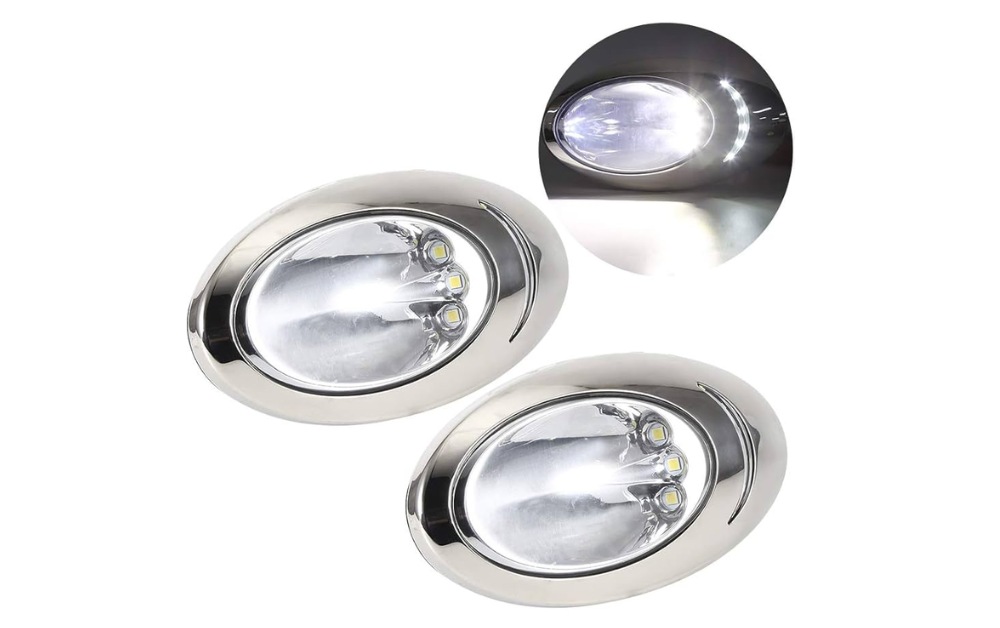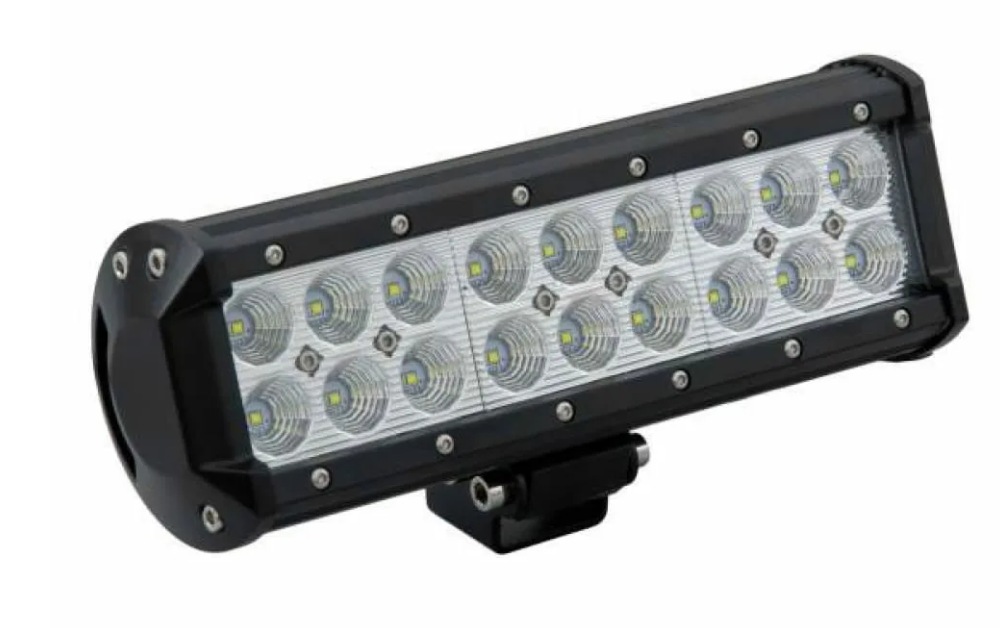
Navigating the stunning waters of the UAE, whether off the coast of Dubai or around the mangroves of Abu Dhabi, demands more than just a strong hull and an efficient engine — it also requires proper lighting. Marine lights are essential for safety, visibility, navigation, and even aesthetics during nighttime boating. LED and halogen marine lights are among the most popular options for UAE boaters. But what is best suited to the UAE’s special marine conditions? In order to help boaters, make the best choice for their vessel, this blog explores the benefits and drawbacks of both lighting methods.
Understanding the Basics
Halogen marine lights have been a traditional choice for many years. They work by transferring power via a tungsten filament that is enclosed in a quartz envelope that contains halogen gas. They’re known for producing a warm, bright light and are inexpensive upfront.
However, LED (Light Emitting Diode) marine lights represent a newer, more innovative lighting solution. They operate by flowing current through a semiconductor, causing it to produce light in a far more energy-efficient manner. LEDs are known for their durability, minimal power consumption, and immunity from environmental stress.
Power Consumption: Essential in Remote Marine Regions
One of the most significant distinctions between halogen and LED marine lights is power efficiency — an essential consideration for boaters.
- Halogen lights draw far more power. A typical 50-watt halogen bulb will drain so much more juice from your boat’s battery, cutting back on the time you can spend on the water without recharging or running a generator.
- LED lights are highly power-saving. A similar LED bulb would use 5–10 watts of power for the same brightness. This is particularly significant for small boats or those plying off-beat routes where power saving is crucial.
In the UAE’s hot and generally power-starved boating environment, where several boats run on solar-charged or backup power systems, LED lights have no contest in this area.
Heat Emission: A Real Issue in UAE Temperatures
The marine climate in UAE is noted for high ambient temperatures, particularly in the summer when ambient temperatures can go well over 45°C.
- Halogen bulbs give off a lot of heat. This excess heat can heat cabins and cause undue stress to cooling systems.
- LED bulbs are cool to the touch and emit very little cabin heat, making them a perfect choice for already warm environments.
Marine boaters in the UAE will welcome the lower operating temperatures of LED lights when they go out for evening or overnight cruises.
Lifespan and Durability
Maritime conditions are harsh — constant exposure to saltwater, humidity, and vibrations. This is why lighting system durability is a significant priority.
- Halogen lights usually last 1,000 to 2,000 hours and are sensitive to shock. They will also shatter more easily if the bulb or fixture is accidentally dropped or bumped.
- LED lights can last for at least 25,000 to 50,000 hours. They are also shock, vibration, and corrosion resistant, making them the best for rough ocean conditions and high-speed marine applications.
For UAE boaters accustomed to dealing with unpredictable weather in the Arabian Gulf or Indian Ocean, LED lights are the more durable and reliable option.
Cost Comparison: Initial vs. Long-Term Value
Halogen lights may seem cheaper at first blush, with lower initial cost for bulbs and fixtures. This has made them a popular option with frugal boaters.
However, LED lights save money in the long term by:
- Consuming less energy
- Requiring fewer replacement bulbs down the line
- Requiring less maintenance over time
When considering the total lifecycle cost — an essential factor for business boat operators or regular boaters in the UAE — LED maritime lighting is more economical in the long term.
Light Quality and Visibility
Visibility is essential for safety, whether maneuvering through narrow marina entrances or making way through other boats while boating at night.
- Halogen lights produce a warm white light that can look more natural but won’t go as far or shine as brightly, particularly underwater.
- LED lights provide a brighter, cleaner, and more focused beam. Most LED marine lights are also produced in colors (such as blue or green) for underwater applications, which can increase visibility underwater and lure marine life for fishing at night.
LED lights are at the forefront once again for sheer brightness and brilliance — particularly for nighttime navigation and submersion in clear Gulf waters.
Environmental Factors
Sustainability is becoming increasingly relevant in maritime businesses, particularly in green markets like the UAE.
- Halogen bulbs are not as environmentally friendly because they last less long and consume more energy.
- LEDs facilitate sustainability aspirations with extended usage life, reduced energy consumption, and recyclability.
Considering the UAE’s drive towards cleaner technologies and sea conservation, LED lighting best meets national sustainability aspirations.
Last Word: LED or Halogen
Following a comparison of performance, efficiency, cost, and longevity, it’s evident that LED marine lights are more suitable for UAE boaters. Although halogen lighting remains suitable for low-budget or short-term applications, the advantages of LED lighting in the challenging UAE marine environment are far too significant to overlook.
The primary benefits of LED marine lights for UAE boaters are:
- Less power consumption
- Increased lifespan
- Improved heat and humidity durability
- Improved safety and visibility
- Environmental sustainability
- Reduce long-term expense
Conclusion
For UAE boaters who expect high performance, safety, and efficiency from their marine lights, the transition from halogen to LED is not merely a trend — it’s an intelligent choice. Whether you’re a recreational sailor cruising the coast or a commercial vessel transporting passengers between Emirates, LED marine lights represent better value, reliability, and peace of mind. As the UAE’s marine sector continues to advance, so will the use of LED technology — lighting the path to safer and greener voyages.



